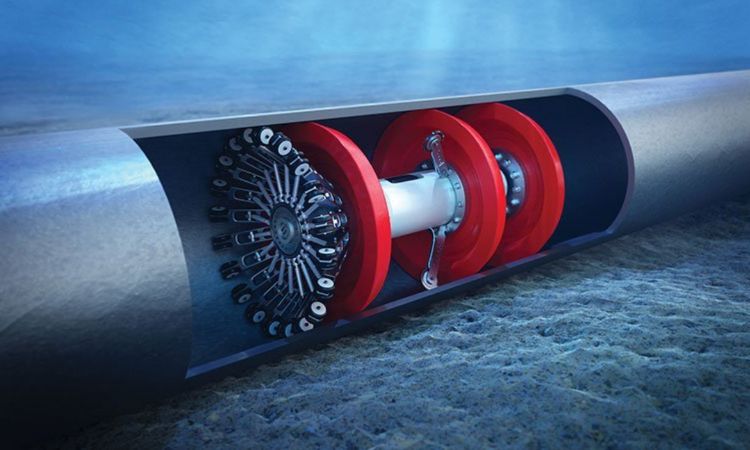The global Intelligent Pigging Market Size has been experiencing steady growth, reaching a value of approximately USD 744.55 million in 2021. With technological advancements and increased focus on pipeline safety and integrity, the market is projected to grow at a CAGR of 5.4% between 2024 and 2032, reaching around USD 1,008.90 million by 2027. This article delves into the key benefits of intelligent pigging, industry developments, market drivers, challenges, opportunities, and more.
Key Benefits of Intelligent Pigging
- Enhanced Pipeline Safety: Intelligent pigging is a crucial technology used to inspect pipelines for any defects, corrosion, or blockages. It helps identify issues early, preventing pipeline failures and environmental hazards.
- Cost-Effective Maintenance: By detecting pipeline anomalies, companies can carry out targeted repairs, reducing the need for costly shutdowns and preventing unexpected failures.
- Regulatory Compliance: Governments and regulatory bodies worldwide mandate regular pipeline inspections, and intelligent pigging helps operators meet these stringent safety regulations.
- Non-Destructive Testing: The technology allows for non-invasive internal inspection without halting pipeline operations, thereby minimizing disruption to the flow of oil, gas, or other substances.
- Extended Pipeline Life: By enabling preventive maintenance, intelligent pigging helps extend the life of pipelines, ensuring operational efficiency and reducing replacement costs.
Key Industry Developments
The intelligent pigging market has witnessed several notable industry developments in recent years:
- Increased Adoption of Advanced Tools: There has been a rising trend in the adoption of advanced magnetic flux leakage (MFL) and ultrasonic testing (UT) tools for improved inspection accuracy.
- Focus on Research & Development: Companies are investing in R&D to develop smaller, more flexible pigs capable of navigating complex pipeline geometries, including those with multiple bends.
- Integration with Data Analytics: Intelligent pigging systems are increasingly incorporating data analytics, allowing operators to receive detailed reports, predictive insights, and actionable recommendations.
Driving Factors
The intelligent pigging market is driven by several factors that contribute to its growth:
- Aging Infrastructure: Many countries, particularly in North America and Europe, are facing challenges with aging pipeline infrastructure. The need for regular inspections to ensure pipeline integrity is a significant driver for the intelligent pigging market.
- Stringent Regulatory Frameworks: Governments have implemented rigorous safety standards for pipeline operators, making it mandatory for companies to use intelligent pigging technologies for routine inspections.
- Rise in Energy Demand: The global demand for oil and gas continues to grow, leading to an increase in pipeline networks for transportation. Intelligent pigging ensures the safety and efficiency of these critical infrastructures.
- Focus on Environmental Protection: Preventing oil spills and leaks has become a top priority for industries and governments worldwide. Intelligent pigging plays a key role in identifying defects before they lead to environmental disasters.
Restraining Factors
Despite its promising growth prospects, the intelligent pigging market faces some restraints:
- High Initial Costs: The implementation of intelligent pigging technology involves significant upfront investment, including the cost of equipment and skilled personnel.
- Technical Challenges: While intelligent pigs are highly effective, certain pipeline configurations (e.g., multiple bends, variable diameters) pose challenges in conducting thorough inspections.
- Pipeline Accessibility: Not all pipelines are easily accessible, particularly in remote or offshore locations. This can limit the use of intelligent pigging in certain areas, hindering market growth.
Market Segmentation
By Technology
- Magnetic Flux Leakage (MFL): MFL is the most commonly used technology for intelligent pigging due to its ability to detect corrosion, metal loss, and other defects.
- Ultrasonic Testing (UT): UT is used for inspecting the wall thickness and internal conditions of pipelines. It offers high accuracy but is typically more expensive than MFL.
- Caliper Inspection: Caliper pigs are used to measure the internal diameter of pipelines, detecting any dents, deformations, or blockages.
By Application
- Oil Pipelines: Oil transportation pipelines are one of the largest segments for intelligent pigging applications due to the critical need for safety and environmental protection.
- Gas Pipelines: The gas pipeline segment is also a major market due to the high-pressure conditions that make early defect detection essential.
- Chemicals Pipelines: Pipelines used to transport chemicals require regular inspections to avoid leaks and potential environmental hazards.
Market Outlook and Overview
The intelligent pigging market is poised for significant growth in the forecast period. Key trends include the development of more sophisticated pigging technologies, increasing demand for real-time data analytics, and growing investment in the energy sector. The market is particularly strong in North America, followed by Europe and Asia-Pacific.
The market is expected to maintain a steady CAGR of 5.4% from 2024 to 2032. The rising focus on sustainability and environmental protection will further drive demand for intelligent pigging technologies that reduce the risk of leaks and spills.
Trends in the Intelligent Pigging Market
- Integration with IoT: The incorporation of IoT technologies with intelligent pigging is enabling real-time monitoring and predictive maintenance, offering significant cost savings for operators.
- Miniaturization of Pigs: As pipeline networks become more complex, there is a trend toward the development of smaller, more flexible pigs that can navigate intricate pipeline layouts.
- Automated Pigging Systems: Automation in pigging processes is gaining momentum, reducing the need for manual intervention and improving operational efficiency.
Industry Segmentation
By Region
- North America: The North American region dominates the intelligent pigging market due to its extensive pipeline infrastructure and strict regulatory environment.
- Europe: Europe is a significant market for intelligent pigging, driven by aging infrastructure and the need for pipeline integrity management.
- Asia-Pacific: The Asia-Pacific region is expected to witness strong growth due to rising energy demand, new pipeline projects, and increased investment in oil and gas infrastructure.
- Latin America & Middle East: These regions are also growing markets, particularly due to the expansion of oil and gas exploration and transportation activities.
Regional Analysis/Insights
North America remains the largest market for intelligent pigging, with the United States and Canada leading in terms of adoption. The region’s aging pipeline infrastructure, stringent government regulations, and focus on environmental safety contribute to the high demand for intelligent pigging technologies.
Europe follows closely, with countries like the UK, Germany, and Norway investing heavily in pipeline maintenance and safety. The increasing focus on renewable energy and the shift away from coal and nuclear power are also expected to drive the intelligent pigging market in the region.
In the Asia-Pacific region, countries such as China, India, and Australia are experiencing significant growth in the oil and gas sector, which is expected to boost demand for intelligent pigging technologies.
Major Key Players
- T. D. Williamson, Inc.
- ROSEN Swiss AG
- Enduro Pipeline Services, Inc.
- Intertek Group plc
- Applus Services, S.A.
- LIN SCAN
- Dexon Technology PLC
- Others
Opportunities
- Emerging Markets: Growing energy demand in emerging markets like India and Southeast Asia presents significant opportunities for intelligent pigging companies.
- Technological Innovations: Continued innovation in sensor technology, data analytics, and IoT integration offer opportunities for companies to differentiate their offerings.
- Environmental Regulations: The tightening of environmental regulations globally presents a growing opportunity for intelligent pigging solutions that enhance pipeline safety and minimize environmental risks.
Challenges
- Cost of Implementation: The high initial cost of intelligent pigging technologies and services can be a barrier to adoption, particularly for smaller companies.
- Technical Limitations: Some pipelines, especially those in remote areas or with complex configurations, pose challenges to intelligent pigging inspections.
- Skilled Labor Shortage: The lack of skilled technicians capable of operating advanced intelligent pigging systems can hinder market growth.





